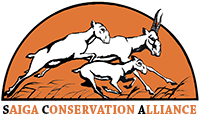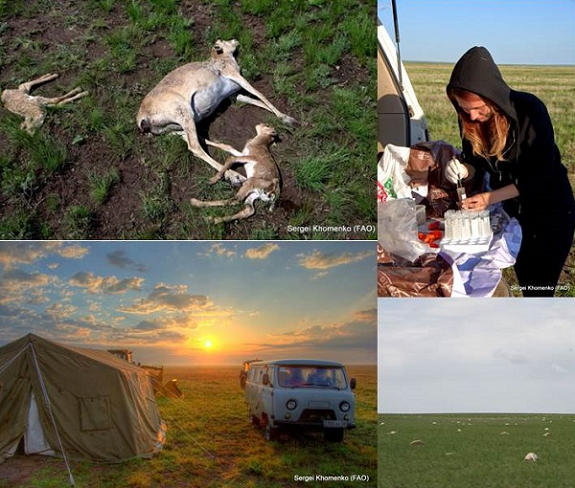In May 2015 an extraordinary scene unfolded on the steppes of central Kazakhstan. Female saigas gathered in their usual huge numbers to give birth on the open plain over a period of just 10 days, a spectacle thought to be a predator-swamping mechanism and a way to hit the peak of forage availability during lactation and calf growth. But this time, the females quickly became weak and uncoordinated, dying in a matter of hours. Soon a vast area stretching over hundreds of kilometres was littered with corpses. The calves followed soon after; within any given aggregation of tens of thousands of animals, it appeared that every single animal died over a period of a few days.
I have been working on the ecology and conservation of saigas for 25 years, during which time I have seen the species decline by 95% from over a million individuals to a few thousands, due to heavy poaching following the break-up of the Soviet Union, and then rebound. This population in central Kazakhstan had got back up to around 240,000 individuals, and was the engine of the species’ recovery. So this mass die-off was a terrible tragedy for me and my fellow saiga ecologists. However it was also a fascinating scientific puzzle.
We quickly got to work to form an international, interdisciplinary team to study the disease and its causes. Led by Richard Kock at the Royal Veterinary College, with colleagues from the Kazakh government’s Research Institute for Biological Safety Problems and the Association for the Conservation of Biodiversity of Kazakhstan, Bristol, FAO, Umea and other institutions, we include ecologists, rangeland scientists, vets and spatial modellers. I am focussing particularly on the ecology and life history of the saiga, and exploring the evidence from previous mass mortalities in saigas and other species, to determine how and why an event like this might have occurred.
We quickly raised money to send a team into the field and analyse a range of samples from the environment and the dead saigas. It soon became clear that the cause is not obvious, and that we would have to piece together a complex jigsaw to get the full story. On one level, we already have the answer; the proximal cause of death was toxicity from infection by opportunistic bacteria found naturally in the animals’ respiratory tract or in the environment (Pasteurella multocida and in some cases Clostridium perfringens). But the question then is – why did these commensals become virulent? What was the environmental or internal trigger, either reducing the animals’ immunity to these bacteria or triggering virulence in the bacteria, or both?
We are now exploring these questions. Our research includes going back to old field notes from the Institute of Zoology in Kazakhstan, particularly from 1988 when a similar mass mortality occurred, looking for evidence of events like this in other species, looking at differences in the vegetation composition in die-off and control sites and years, and exploring changes in temperature and rainfall over a range of different temporal and spatial scales. We are also testing tissue and environmental samples for a wide range of toxins, as well as other disease-causing agents in case some other underlying infection was involved. So far, the evidence points towards a combination of short-term but landscape-scale weather variation and physiological stress from calving, but there is still a long way to go until we can be sure.
There has been huge public interest in this event, both within Kazakhstan and globally, with wild and not-so-wild theories circulating, and a call for quick answers and assurances that this will never happen again. It seems, however, that we won’t be able to give the comfort that people need; in fact it is likely that with climate change this type of event will become more rather than less common. Our strong message is that resilient and abundant populations are required, with strong protection from poaching, so that the species can do what it does best when catastrophe strikes: bounce back.
Featured image: Vets working together to find out what caused the disaster.

